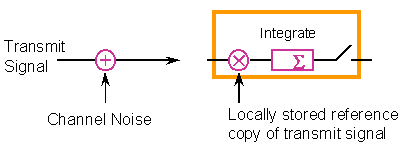
|
|
|
JPL's Wireless Communication Reference WebsiteChapter: Analog and Digital Transmission |
The performance of wireless communication systems is highly determined by noise. Particularly if signals are in a fade, the signal-to-noise ratio can be low and bursts of error can occur.
This is other argued that wireless systems, in particular cellular systems with dense frequency reuse, are interference-limited rather than noise-limited. However, any (digital) signal processing algorithm that attempts to remove, cancel or attenuate such interference increases the noise. The ability to separate multiple interfering signals is critically determined by the signal-to-noise ratio.
A basic and generally accepted model for thermal noise in communication channels, is the set of assumptions that
Mostly it is also assumed that the channel is Linear and Time Invariant (LTI), sometimes also frequency non-selective.
Which of the above assumptions are realistic in a wireless channel?
Typical causes why the noise factor n is larger than unity are
At 900 MHz, the man made noise power level can easily be 20 dB (100 times) above the thermal level.
Show that the ratio Eb/N0 is a dimension-free unit.
 |
The matched filter principle for signals transmitted over LTI AWGN channels | |